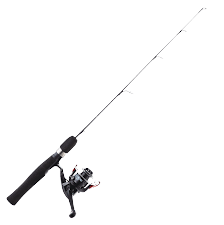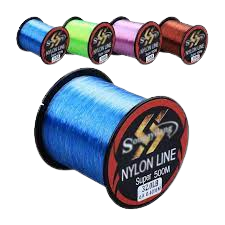The Evolution of the Fishing Pole: A Journey Through Time
Introduction
Fishing, a practice that dates back thousands of years, has evolved significantly over time, with each era contributing to the refinement of tools and techniques. One such crucial tool in the angler’s arsenal is the fishing pole, a device that has seen remarkable transformations since its humble beginnings. In this article, we will embark on a journey through the centuries, exploring the rich history and evolution of the fishing pole.
The Early Years
Ancient Innovations
The earliest evidence can be traced back to ancient civilizations, where primitive societies utilized rudimentary tools crafted from natural materials. These early poles were essentially long sticks or branches with lines attached, often adorned with basic hooks crafted from bones or natural materials. These simple tools laid the foundation for the more sophisticated designs that would emerge in later centuries.
Medieval Advancements
As societies progressed, so did the technology behind fishing poles. In medieval Europe, for instance became more refined, with the use of materials like bamboo and the incorporation of reels for line management. The concept of a rod with a reel allowed for improved casting and retrieval, marking a significant step forward in angling technology.
The Renaissance and the Birth of Specialize
The Renaissance era saw a resurgence of interest in arts, sciences, and innovation, and fishing was no exception. During this time, fishing poles began to take on a more specialized role as anglers sought specific designs for different types of fishing. Materials like ash and hazel were favored for their flexibility and durability, and the length varied based on the type of water bodies being fished.
Emergence of Specialized Poles
As fishing techniques diversified, so did the need for specialized fishing poles. Fly fishing, for example, gained popularity during the Renaissance, leading to the development of longer and more flexible rods designed to cast lightweight flies. Similarly, sea fishing demanded sturdier and longer poles to handle the challenges of larger, more powerful fish. The fishing pole was no longer a one size fits all tool but a specialized instrument tailored to the angler’s specific needs.
Industrialization’s Effects
The fishing industry was fast to embrace the advantages of mass production as a result of the paradigm shift in manufacturing techniques brought about by the Industrial Revolution. Poles changed from being artisanal equipment fashioned by hand to becoming manufactured goods, opening them up to a wider market.
The Development of Fiberglass 
The development of fiberglass as a material for fishing poles throughout the middle of the 20th century was one of the most important developments. Fiberglass revolutionized the industry by providing the ideal balance of strength, flexibility, and affordability. Fishing poles that could handle a wider range of fishing situations and were lighter and more durable were now available to anglers.
The Modern Era and the Graphite Revolution
In the second half of the 20th century, graphite became a revolutionary fishing pole material. The lightweight and excellent strength of graphite rods immediately made them a favorite among fisherman. As graphite offered unprecedented sensitivity and responsiveness, this signaled a departure from conventional materials like bamboo and fiberglass.
Technological Advancements
- The modern fishing pole is the outcome of ongoing technological advancements. Fishing rods that are extraordinarily light, responsive, and powerful are being made using high tech materials like carbon fiber composites. The addition of sophisticated guides, reel seats, and ergonomic handles further improves the functionality of fishing poles as a whole.. Specifically designed fishing poles for various techniques:
- Spinning rods, distinguished by their open face reels, have evolved into a standard in fishing, particularly for beginning anglers. These rods are well liked for recreational fishing since they are adaptable and may be utilized in a variety of fishing situations.
Rods for baitcasting
More seasoned fisherman frequently favor baitcasting rods because they provide more control and accuracy. They are frequently employed for casting techniques like flipping and pitching that call for accuracy.
Fly fishing rods 
Fly fishing rods are now again quite popular, thanks to contemporary designs that include cutting edge materials for better performance. These rods are made especially for casting delicate and accurate lightweight flies.
Environmental Impact
As the popularity of fishing continues to grow, there is an increasing awareness of the environmental impact of angling. Modern fishing poles are being designed with sustainability in mind, with manufacturers exploring eco friendly materials and production processes.
Catch and Release
The concept of catch and release has gained prominence in recent years, promoting the responsible and ethical treatment of fish. Fishing pole designs now consider the well being of the fish, with features like barbless hooks and materials that reduce stress on the caught fish.
Custom Rod Building
One of the trends in modern fishing is the rise of custom rod building. Anglers are now looking for unique, personalized fishing poles tailored to their specific preferences. Customization options include selecting rod length, action, power, handle materials, and even custom paintwork. This trend not only allows anglers to have a more personal connection with their equipment but also ensures that their fishing pole is perfectly suited to their needs.
High End Luxury Fishing Poles
In recent years, luxury fishing poles have emerged as a niche market. Crafted with exquisite materials such as exotic woods, precious metals, and high grade leather, these fishing poles are designed not just for their functionality but as works of art. Some anglers seek out these high end poles as status symbols, combining their love of fishing with a desire for elegance and luxury.
Technological Integration
Smart Fishing Poles
The era of the Internet of Things has found its way into the world of fishing. Smart fishing poles equipped with sensors, GPS, and connectivity options have started to appear. These high tech fishing poles can track water conditions, record catches, and even provide real time weather updates to help anglers make informed decisions while on the water.
Advanced Reel Technologies
- In addition to the fishing pole itself, reels have also seen technological advancements. Electric reels with programmable settings, remote control, and line counter features are becoming more common, particularly in deep sea and offshore fishing. These innovations make the process of landing large and powerful fish more manageable.

- With growing concerns about environmental impact, the fishing industry is focusing on sustainable materials. Manufacturers are exploring alternatives to traditional rod materials like carbon fiber from sustainable sources and recycling programs for old rods. Sustainable practices are not limited to the production of fishing poles but also extend to packaging and distribution to minimize waste.
Ethical Fishing Practices
Anglers today are increasingly conscious of the importance of ethical fishing practices. Conservation efforts, such as catch and release, have gained traction to protect fish populations. Fishing pole manufacturers are actively collaborating with conservation organizations to promote responsible angling and minimize harm to aquatic ecosystems.
Online Communities
Through online forums, social media groups, and websites dedicated to fishing, the internet has facilitated the interaction of fishermen from all over the world. Anglers can discuss their experiences, trade advice, and display their catches on these platforms. Reviews and suggestions regarding poles are frequent subjects, assisting other fishermen in choosing their gear wisely.
Competitions and tournaments
Due to fishing’s growing appeal, angling competitions and tournaments have emerged. Specialized poles made for certain sorts of fishing, including bass fishing, trout fishing, or saltwater angling, are frequently used in these tournaments. The performance of the angler’s fishing rod as well as their talent and plan are frequently determining factors in these competitions.
Conclusion
The fishing pole, a tool that has evolved over millennia, continues to be a symbol of the timeless connection between humans and nature. From its humble beginnings as a basic stick with a line to the sophisticated, high tech instruments of today, the pole has mirrored the progress of societies and the ever changing needs of anglers. As we cast our lines into the waters of the future, it is certain that the pole will continue to evolve, adapting to new technologies, environmental concerns, and the ever growing passion for the art of angling.








